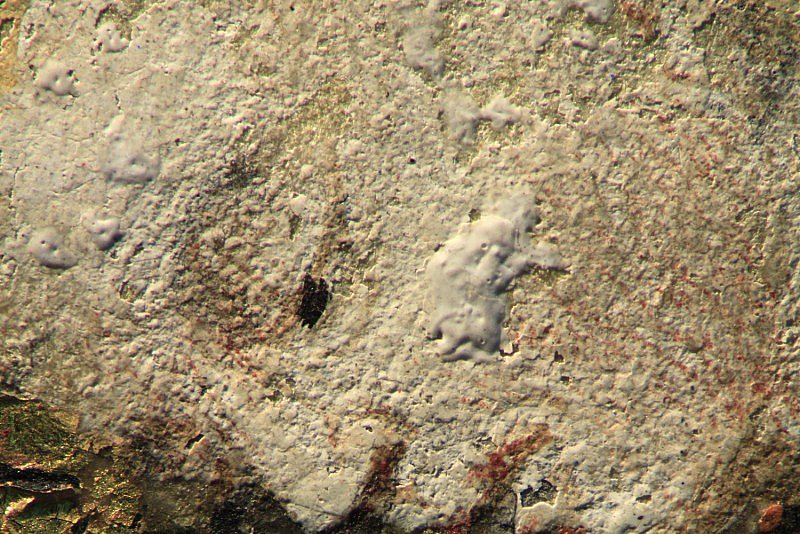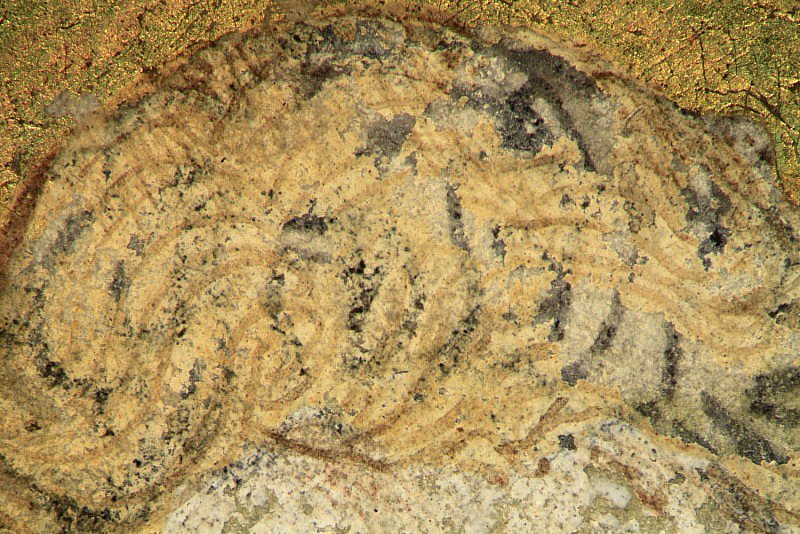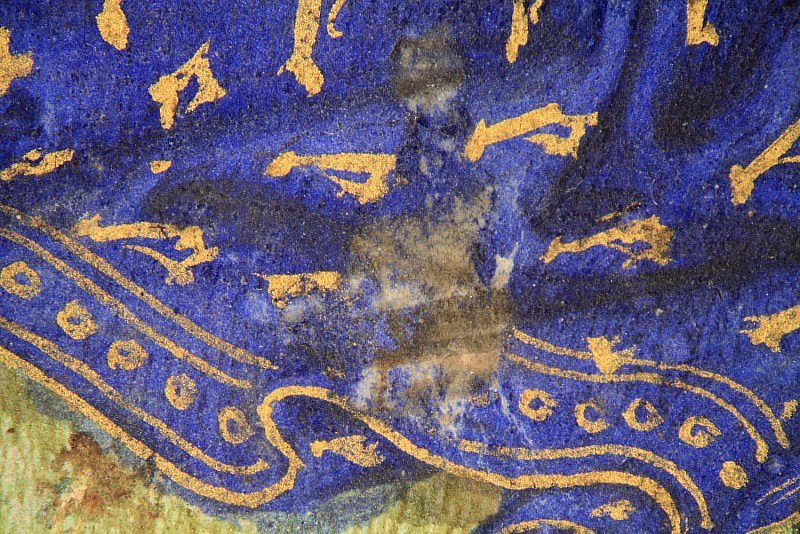Underdrawing
Artists' Techniques
The extensive underdrawing in brown ink which is revealed in the majority of the illuminations, both through thinly laid colours or paint losses and in the near-infrared images, is crucial in distinguishing between the three main artists.
A substantial amount of underdrawing and frequent changes of mind at the painting stage are typical of the Giac Master and the two assistants who painted large miniatures.
The Rohan Master’s work is characterised by elaborate drawing of an idiosyncratic nature. Strings of curly loops resembling doodles and brushed over with a grey ink wash cascade down fabric folds or congregate into pools of drapery.
The Madonna Master instead painted both of his miniatures freehand: neither shows any underdrawing.



St John (Gospel Sequence of St John)
Accompanied by his symbol, the eagle, St John is writing his Gospel, while the devil creeps beneath and spills his ink. The marginal image, the first in the cycle illustrating the Pilgrimage of Jesus Christ, shows the poet receiving a vision of God. The arms of Isabella Stuart have been added to the border.
